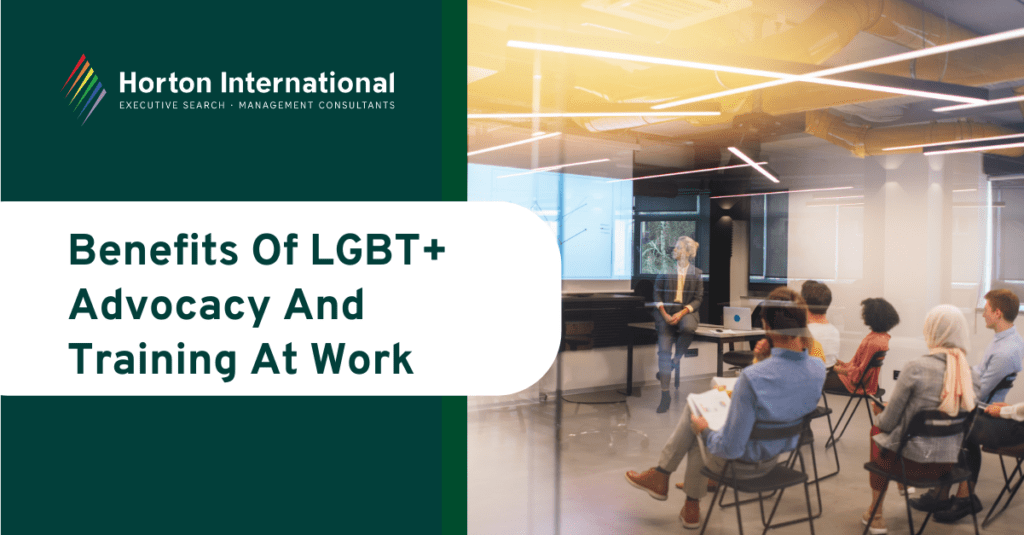June is Pride Month, and while inclusivity should be a year-round practice for organisations, this month when there is a greater focus on LGBTQ+ awareness, is ideal for ensuring your organisation remains committed to being inclusive and advocating for those who are marginalised.
Many organisations have implemented inclusion policies and have diversity training that is part of the induction process. While many organisations believe to be inclusive, many LGBTQ+ employees still face discomfort and discrimination in the workplace. For example, 60% of LGBTQ+ survey respondents reported needing to correct assumptions that colleagues make, and 40% of LGBTQ+ women felt they had to provide additional evidence to prove their competence.
One of the biggest areas that can boost workplace advocacy is education.
No organisation is perfect
With all areas of employee support and diversity in the workplace, it is simply not possible for LGBTQ+ training to be a ‘set and forget’ practice. By adopting a growth mindset, organisations can always learn more and improve procedures and policies to be more inclusive and supportive of every single team member in the business.
Benefits of LGBTQ+ training in the workplace
Legal compliance
While this shouldn’t be the driving factor for creating an inclusive workplace, it is an important consideration for organisations. As part of the Equality Act 2010, there is a requirement for employers to take all reasonable steps to prevent discrimination in the workplace.
By taking all reasonable steps, the organisation will not be liable for incidents of offending behaviour. However, without this training, awareness and anti-discriminatory policies, the organisation could face severe consequences.
Boost recruitment
Attracting talent is a big challenge for employers in a super competitive market. Many organisations are facing a significant skills gap, and attracting and retaining talent is becoming a major priority. A diverse workforce is seen as a significant benefit to job seekers. In fact, 76% of job seekers say that diversity in the workplace is an important factor when considering potential employment offers.
Furthermore, one in three employees would not apply for a role where there is a lack of diversity in the organisation, which rises to 41% for LGBTQ+ job seekers.
As part of the recruitment drive, emphasising what the organisation does in terms of LGBTQ+ advocacy and training can significantly boost the number of applications. What’s more, job seekers are more likely to trust employees compared to senior leaders, websites and recruiters when it comes to understanding diversity. Consequently, the LGBTQ+ training, discussions and advocacy within the work that operates across every level can help boost recruitment and attract top talent.
Productivity through training
A diverse workforce is a more productive workforce. Training can help foster a culture of acceptance and belonging for LGBTQ+ employees, who can face feeling isolated, marginalised, or unsafe at work. Training and advocacy promotion can help to build awareness and inclusivity within the workplace.
Advocacy can feel limited at work as people may feel scared of standing up, understanding accepted terminology or feeling like they don’t know enough to stand up and raise their voices. LGBTQ+ training can help to build confidence in knowing what to say, how to help and why advocacy can be so important in the workplace.
All of this, from learning more, creating a more welcoming culture and building advocacy, can bring your teams together, creating improved employee engagement, which, in turn, increases productivity.
How to implement LGBTQ+ training at work?
LGBT training can be implemented in various ways depending on the needs and goals of each organisation. Some possible steps are:
Assess
A needs assessment can help to identify the current level of awareness and acceptance of LGBT issues among employees and managers, as well as the gaps and challenges that need to be addressed.
Align
Developing a clear vision and strategy for LGBTQ+ inclusion that aligns with the organisation’s mission, values, and objectives can create synchronicity for the organisation.
Tailor
Designing LGBTQ+ training programs tailored to the specific context and audience of each department or unit. The training programs should cover topics such as terminology, stereotypes, myths, facts, laws, policies, best practices and case studies related to LGBTQ+ issues.
Evaluate
As well as delivering training, it is important to evaluate the impact and effectiveness of the training programs. This can be done using feedback surveys, interviews, focus groups or other methods. The evaluation should measure changes in knowledge, attitudes, behaviours and outcomes related to LGBTQ+ inclusion.
Maintain
Finally, it is important to provide ongoing support and resources for employees and managers who want to learn more or get involved in LGBT initiatives to build a workplace of advocacy. This could include mentoring programs, employee networks, online platforms, events or campaigns.
LGBTQ+ training is not a one-time event but a continuous process that requires commitment and collaboration from all levels of the organisation. By investing in LGBTQ+ training, organisations can create a more inclusive workplace where everyone can thrive and the business can prosper







